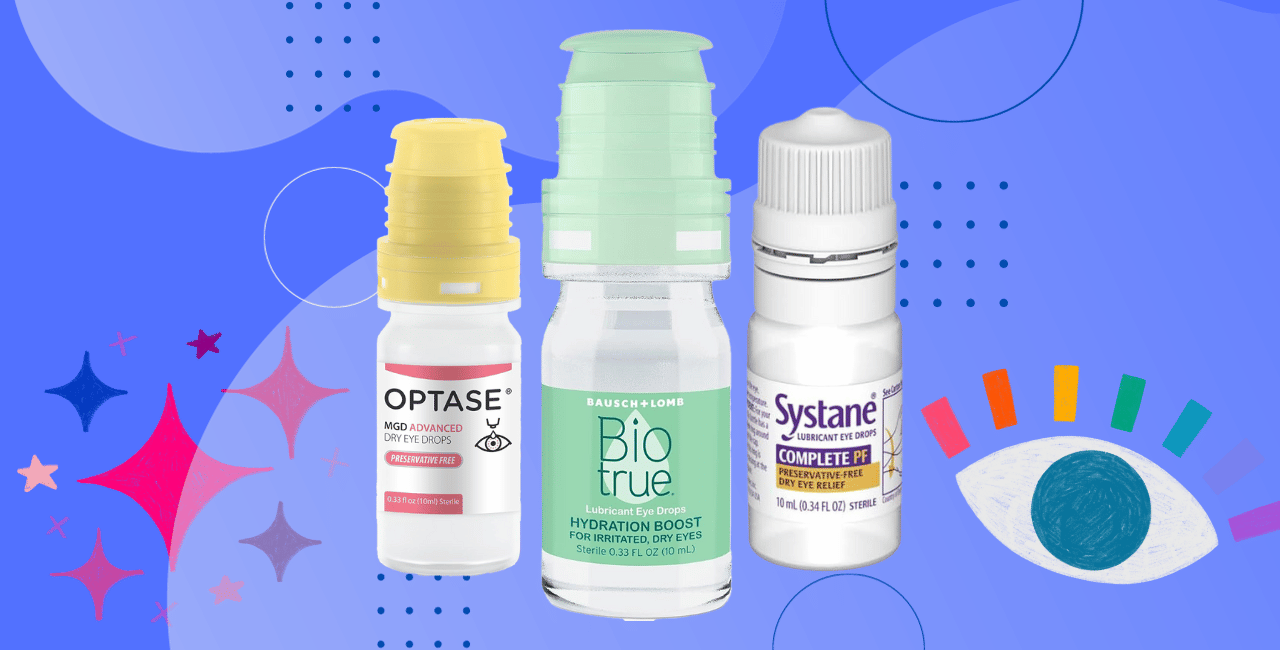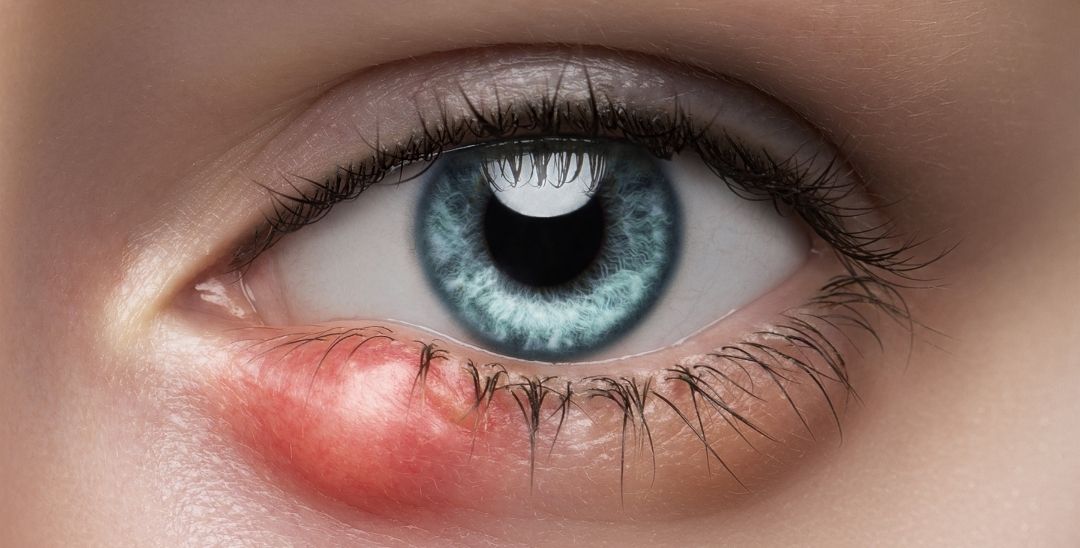Dry eye syndrome affects millions of people worldwide. It occurs when your eyes lack in the production of one (or more) of the main components of your tears, causing decreased tear volume and chronic irritation.
To learn more about Dry Eye Disease, be sure to read Dry Eye: Symptoms, Causes and Treatment and our post about the Role of Inflammation in Dry Eye.
For those dealing with the symptoms of dry eye, over-the-counter (OTC) eye drops can provide quick relief. However, with the abundance of options available, choosing the right OTC drops for your specific needs can be overwhelming. In this article, we'll explore the factors to consider when choosing drops for dry eye management.
Understanding Dry Eye Syndrome
Before delving into the different OTC eye drops, it's important to understand dry eye syndrome and its main causes. Some OTC drops will target more specific etiologies of dry eye than others. Dry eye can result from several factors; however, the main two classes are):
- Reduced Tear Production (Aqueous deficient): Age, hormonal changes, certain medications like antihistamines and some antidepressants, as well as systemic medical conditions like Sjogren syndrome and rheumatoid arthritis can lead to decreased tear production.
- Increased Tear Evaporation (Lipid deficient): Age, inflammatory conditions like Rosacea, chronic blepharitis on the eyelids, and environmental factors (dry air, wind, and screen time for example) can cause the tears to evaporate too quickly (1). Both classes cause some form of an imbalance in the tear composition which then leads to insufficient lubrication of the surface of the eye. This begins the chronic cascade of dry eye disease.
Ingredients of OTC Drops
Selecting an appropriate OTC eye drop for dry eye involves consideration of several factors.
Severity of symptoms/disease
Artificial tears are non-medicated formulas that provide lubrication and temporary relief of dry eye symptoms. Most OTC tear drops are preserved and available in multi-dose bottles. These would normally contain lubricants such as polyethylene glycol (PEG) or carboxymethylcellulose (CMC) and would be best for milder cases of dry eye. These same lubricants are also typically available in higher concentrations (this means a more viscous or thicker composition) that would have a longer duration of action on the eye, so would be better in more advanced cases of dry eye.
For very severe cases, look for even thicker ointment type formulas. Most ointments will use types of mineral oil or petrolatum as their main lubricating ingredient. It is important to note that the thicker formulations can cause blurry vision and are best suited for nighttime use. Examples of these formulas would be Refresh Tears (for mild dry eye), Refresh Optive Advanced (mild to moderate dry eye) and Refresh Celluvisc (moderate to severe dry eye).
Hyaluronan (also known as hyaluronic acid or HA) is a newer ingredient being used much more often in OTC drop formulas. It is a naturally occurring substance in the human body: found within the connective tissues of the cornea and conjunctiva, the vitreous humor of the eye as well as in synovial fluid. It plays a crucial role in maintaining hydration because of its superior ability to retain moisture, strengthening the mucosal-aqueous layer of the tears (2). HA promotes tissue repair and regeneration, meaning it has healing and anti-inflammatory properties. This makes it an excellent choice in more advanced cases of chronic inflammatory dry eye. Products like Systane Ultra Hydration, Systane Complete and Hylo drops all contain HA.
Preservative considerations
In severe cases of dry eye, some patients may require drops much more frequently. The presence of preservatives in OTC drops can be counterproductive in these cases as some preservatives can be irritating to the eye’s surface when used too often or for extended periods of time (3). If you require drops more than four times daily, a preservative-free formula would likely be best. Look for individual vials or preservative-free bottles. Bio
Allergies and Sensitivities
Sensitivity or allergy to preservatives like benzalkonium chloride (BAK) or polyquaternium-1 (Polyquad) which are frequently used in many OTC formulas is possible and quite common. In addition to this, some patients can also be allergic to the lubricants themselves. An allergy to any ingredient in an eye drop would cause significant burning, stinging and increased irritation upon instillation. It is important to note any increase in irritation after using an OTC drop; mention this to your eye care practitioner in case of a reaction. If you have an allergy to BAK, Polyquad, PEG, or CMC, it would be best to avoid OTC drops containing these ingredients. Check the label carefully and discuss with your eye care practitioner if you are unsure.
Which Drops to Choose?
As mentioned earlier, certain OTC drops will work better for specific types of dry eye. For patients with lipid deficient dry eye, looking for drops that contain mineral oils to help improve the quality of the lipid component of their tears can be crucial. Drops like Optase MGD and Systane Balance fit these criteria.
Patients with aqueous deficient dry eye have a decreased overall tear volume which increases the solute concentration (osmolarity) of their tears. Drops like Bion tears or Theratears are hypotonic, meaning they will counteract the higher osmolarity of tears in these patients. Alternatively, aqueous deficient dry eye can also be managed well with drops containing HA; as mentioned earlier, HA retains moisture on the surface of the eye very well. Look for Biotrue, Hylo, Systane Ultra Hydration or drops for this classification of dry eye (4).
It is important to note that not every patient is going to fit the “textbook picture” of one type of dry eye. Many patients will also have a multifactorial etiology, meaning that they might do well with OTC drops for both official classes of dry eye. All patients are different and will thus respond differently to each treatment modality. If you are unsure about which type of dry eye you have, consult with your eye care practitioner.
Contact Lenses
If you wear contacts, make sure the OTC eye drops are compatible with your lenses such as Biotrue Hydration Boost Contact Lens Rehydrating Drops. Some drops are suitable for use with contacts, while others are not.
Avoid Decongestants
Some well-known OTC eye drops contain ingredients that can harm the eye. Specifically, decongestants like phenylephrine, classified as a vasoconstrictor medication, are used to relieve redness. They work by stimulating the sympathetic nervous system, decreasing the blood vessel diameter on the conjunctiva of the eye making the eye appear “whiter.” With prolonged use, the blood vessels in your eyes get used to the presence of this medication which can cause them to become chronically red. Phenylephrine containing drops can also be dangerous for some patients who are at risk of angle closure glaucoma. It is best to use these types of drops only as directed and not for prolonged periods to avoid these potential side effects (5,6).
Summary
Choosing the right OTC eye drops for dry eye is important in managing the symptoms of this condition. In summary, milder cases of dry eye may do well with occasional use of preserved OTC formulations. In more advanced cases, considering a higher dosing frequency, a more viscous drop, a preservative-free formula or a hyaluronan-containing formula might be better. By evaluating your symptoms, disease etiology, and considering the many types of drops available, you will be able to choose something that will fit your own personal needs.
Remember to consult with your eye care professional if you have persistent or severe dry eye symptoms, as they can provide personalized guidance and treatment options. With the right OTC eye drops, you can keep your eyes comfortable and alleviate the irritation caused by dry eye disease.
Contributors
 Sarah Farrag, OD
Sarah Farrag, OD
Dr. Sarah Farrag is originally from Halifax, Nova Scotia, and is happy to be practicing optometry in her own hometown. She graduated with honors from the University of Waterloo Doctor of Optometry program in June 2015. In addition to routine optometric care, Dr. Farrag also fits specialized rigid and scleral contact lenses for corneal degenerative diseases including keratoconus and post-corneal transplant eyes.

Justin Mendelson
Serial entrepreneur and product development expert, Justin Mendelson has lived with severe dry eye for nearly two decades. When he was at his worst, he used rewetting drops every 20 minutes and wasn’t sleeping longer than an hour at a time without waking up in excruciating eye pain. After many years of struggle, Justin made a commitment to himself and to the millions of people that suffer from eye disease to develop better products for eye health and chronic dry eye relief.
References
- https://www.tfosdewsreport.org/report-definition_and_classification/48_36/en/
- Hynnekleiv, L., Magno, M., Vernhardsdottir, R. R., Moschowits, E., Tønseth, K. A., Dartt, D. A., ... & Utheim, T. P. (2022). Hyaluronic acid in the treatment of dry eye disease. Acta ophthalmologica, 100(8), 844-860.
- Walsh, K., & Jones, L. (2019). The use of preservatives in dry eye drops. Clinical Ophthalmology, 1409-1425.
- Labetoulle, M., Benitez-del-Castillo, J. M., Barabino, S., Herrero Vanrell, R., Daull, P., Garrigue, J. S., & Rolando, M. (2022). Artificial tears: biological role of their ingredients in the management of dry eye disease. International Journal of Molecular Sciences, 23(5), 2434.
- Soparkar, C. N., Wilhelmus, K. R., Koch, D. D., Wallace, G. W., & Jones, D. B. (1997). Acute and chronic conjunctivitis due to over-the-counter ophthalmic decongestants. Archives of Ophthalmology, 115(1), 34-38.
- Yang MC, Lin KY. Drug-induced Acute Angle-closure Glaucoma: A Review. J Curr Glaucoma Pract 2019;13(3):104–109.






2 comments
Hi Janice,
I too suffer with not closing my eyes completely at night. The Blinkjoy mask is wonderful to give eye protection at night. It made such a positive difference in my sleep quality. I plan to return and learn all I can. Another helpful site is The Dry Eye Shop. dryeyeshop.com. That was the first place I found the Blinkjoy mask. They also offer helpful articles and educational information.
such helpful info here, thank you. I have layers of issues that bring about my dry eyes…but interesting, I’ve not had an eye doctor specifically test for – is it lack of tear production, a problem with the oil glands, or something else. Also, had a doc today tell me that I may not be closing my eyes completely when I sleep. Currently I am trying a shot gun approach to finding relief. Humidifier at night, eye drops during the day, heated eye mask 2x per day for about 15 minutes, etc. Love the look of your mask and will order. Are you familiar with issues of not closing your eyes fully at night?